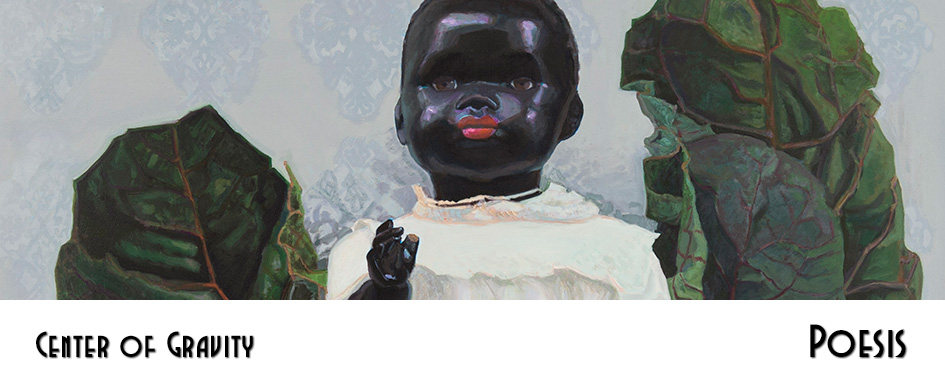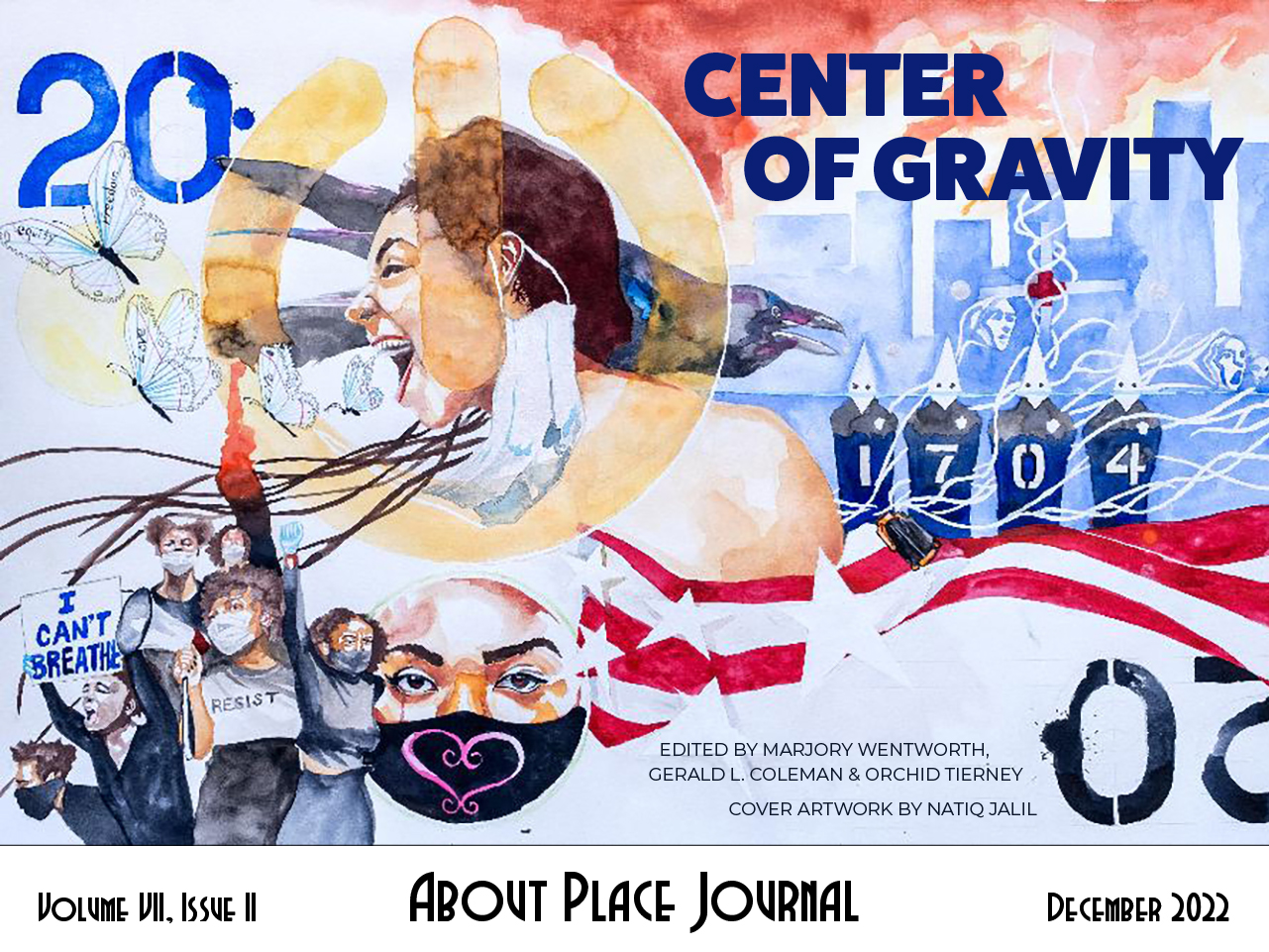stale patchouli in a cloud around her, hair turbaned,
wearing a white skirt so long it trails behind her and puddles
with the crimson shawl she dangles from her fingers.
Slowly she moves through the BART car muttering
got a dollar? nearly incomprehensible, nearly snarling.
She’s pregnant, her belly glides before my eyes. She swans
through the car and then she’s gone, riding her queenly madness.
She’s back again. Excuse me, she mutters as she circles
the man who does not hear her, who also just got on,
pushing a shopping cart piled high with his possessions
and, riding on top, a broken boombox, an empty cardboard box
perched on its edge. Only his shopping cart holds him up.
He’s draped around it, right next to me, he’s too far gone to talk
and I don’t know what to do. If I stand so he can sit, it looks like
I’m avoiding him. If I don’t stand he can’t sit. Finally,
he moves, shoves his cart into a space, sits, the woman across
from him gets up, he has the seats to himself and—what? rests?
falls asleep? dies? There’s a bandage on his ankle. Body collapsed,
head bent to his chest, hair so long I cannot see his face—
Now the woman’s back a third time. Her skirt tangles in his cart
and she just stands there, regal, eyes fixed on nothing.
Two of the thousands unhoused, and the baby to come—
*8035 homeless people were reported in the 2019 count. On May 29, 2020, The Guardian reported, “The coronavirus pandemic pushed the homelessness crisis that has always existed in San Francisco to a level unseen in recent history, with unhoused individuals left with no other option than to live on the streets. The number of tents increased throughout the city by 71% – in the historically underserved, low-income neighborhood of the Tenderloin, the number exploded by 258%.” On August 19, 2022, the San Francisco Chronicle reported as many as 20,000 people will experience homelessness in the city this year.


